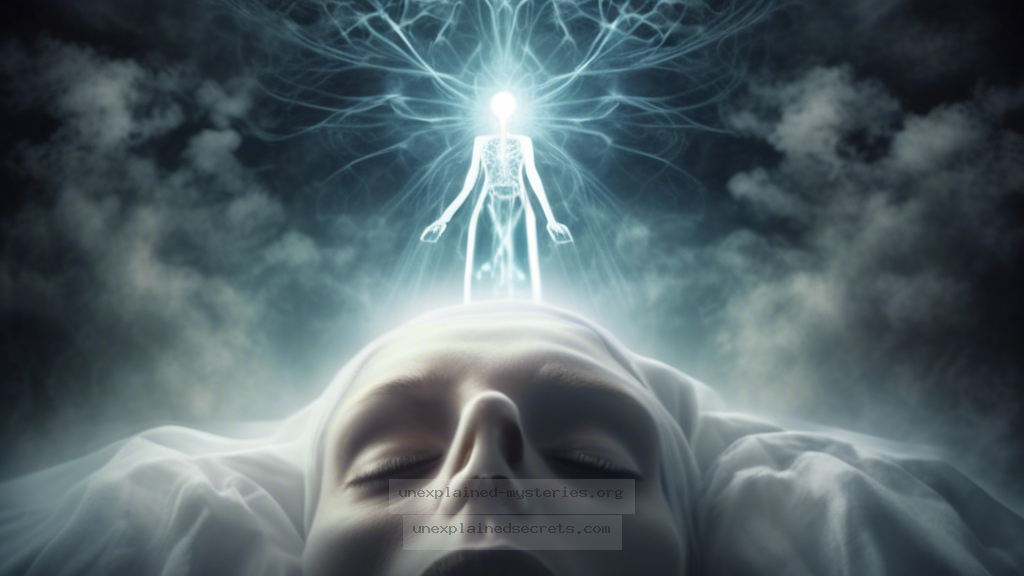What Happens to Consciousness After Clinical Death? Exploring the Enigma of Near-Death Experiences
What Happens to Consciousness After Clinical Death? Exploring the Enigma of Near-Death Experiences
The phenomenon of Near-Death Experiences (NDEs) has captivated scientists, spiritualists, and the general public for decades. With countless accounts of individuals reporting vivid, transformative experiences while clinically dead or near death, a compelling question arises: What happens to consciousness after clinical death? This inquiry not only challenges our understanding of life and death but also raises profound implications for our understanding of consciousness itself. In this post, we will delve into the mysteries surrounding NDEs, exploring historical accounts, scientific theories, and the potential implications for our understanding of life beyond death.
Historical Context of Near-Death Experiences
NDEs have been documented throughout history, spanning across cultures and religions. Ancient texts, such as the Tibetan Book of the Dead, describe experiences akin to modern-day NDEs, suggesting a long-standing fascination with the afterlife and the state of consciousness beyond death. In more recent history, the term “Near-Death Experience” was popularized in the 1970s by Dr. Raymond Moody, who published the groundbreaking book “Life After Life.” Moody’s work highlighted common themes in NDE accounts, such as the sensation of leaving the body, encounters with deceased loved ones, and feelings of peace and unconditional love.
These historical frames provide context for understanding the spiritual and cultural significance of NDEs. The consistency of experiences reported across different cultures suggests that NDEs might tap into universal aspects of human consciousness. This raises further questions about the nature of consciousness itself and whether it persists beyond physical existence.
Core Concepts and Theories Surrounding NDEs
At the core of the NDE phenomenon lies the question of consciousness. Traditional scientific perspectives often reduce consciousness to brain activity, suggesting that when the brain ceases to function, so too does consciousness. However, NDEs challenge this view by presenting accounts of awareness and perception during periods of clinical death when brain activity is typically absent.
Several theories have emerged to explain the phenomenon of NDEs:
- Physiological Theories: Some researchers propose that NDEs are the result of physiological responses to trauma, including the release of endorphins, oxygen deprivation, or altered brain chemistry.
- Psychological Theories: Others suggest that NDEs reflect psychological coping mechanisms, providing individuals with a means to confront mortality and alleviate fear of death.
- Transcendent Theories: A more controversial perspective posits that consciousness exists independently of the brain, suggesting a spiritual or metaphysical component to NDEs.
Documented Cases of Near-Death Experiences
Real-world accounts of NDEs are varied and often striking. One of the most famous cases is that of Dr. Eben Alexander, a neurosurgeon who experienced a profound NDE while in a coma due to bacterial meningitis. He described a journey through a vibrant, otherworldly landscape where he encountered divine beings and experienced unconditional love. His story, as detailed in his book “Proof of Heaven,” has sparked significant interest and debate regarding the nature of consciousness and the afterlife.
Another notable case is that of Anita Moorjani, who had a near-fatal battle with cancer. While unconscious, she reported experiencing a sense of oneness and understanding of her life’s purpose. Upon her return, she found that her cancer had miraculously vanished. Moorjani’s story emphasizes the transformative potential of NDEs, suggesting that they can lead to profound changes in one’s outlook on life.
Scientific Research on Near-Death Experiences
Scientific inquiry into NDEs has grown over the years, with researchers seeking to understand the underlying mechanisms and implications of these experiences. Studies have shown that a significant percentage of individuals who have had NDEs report similar elements, such as the sensation of leaving the body, encountering a bright light, or feeling an overwhelming sense of peace. For instance, a study conducted by the University of Virginia found that approximately 10% of people who have been resuscitated from cardiac arrest report having had an NDE.
Additionally, researchers like Dr. Sam Parnia have studied the phenomenon through the AWARE (AWAreness during REsuscitation) study, which aims to investigate the experiences of cardiac arrest patients. Preliminary findings suggest that consciousness may persist even when the brain is not functioning, challenging traditional notions of death and consciousness.
Spiritual Implications of NDEs
The spiritual implications of NDEs are profound. Many individuals who have experienced NDEs report a renewed sense of purpose, a decrease in fear of death, and a greater appreciation for life. These experiences often lead to significant shifts in beliefs and values, prompting individuals to embrace spirituality or re-evaluate their life choices.
Furthermore, NDEs often emphasize themes of love, compassion, and interconnectedness. This aligns with many spiritual teachings that advocate for a life lived in service to others and a focus on personal growth. The transformative aspects of NDEs highlight the potential for these experiences to serve as catalysts for positive change in individuals and communities.
Alternative Perspectives on NDEs
While many view NDEs as evidence of an afterlife or spiritual existence, alternative perspectives exist. Some skeptics argue that NDEs can be explained through neurobiological processes, suggesting that the brain produces vivid experiences during moments of trauma. This view posits that NDEs do not necessarily imply consciousness beyond death, but rather reflect an intricate interplay of brain activity and psychological responses.
Moreover, cultural interpretations of NDEs can shape the narratives surrounding them. Different cultures have unique beliefs about death and the afterlife, influencing how individuals interpret their experiences. For instance, Western interpretations often lean towards a dichotomy of heaven and hell, while Eastern philosophies may emphasize reincarnation or a continuum of existence.
Common Misconceptions About Near-Death Experiences
Despite growing interest and research into NDEs, several misconceptions persist regarding their nature and implications:
- Misconception 1: NDEs are purely hallucinations or fabrications.
In reality, many individuals report consistent themes and transformative experiences that cannot be easily dismissed as mere hallucinations. - Misconception 2: All NDEs are positive experiences.
While many NDEs are characterized by feelings of peace and joy, some individuals report distressing experiences that challenge their beliefs about life and death. - Misconception 3: NDEs provide definitive proof of an afterlife.
While compelling, NDEs are subjective experiences and do not constitute empirical evidence of an afterlife.
Best Practices for Investigating Near-Death Experiences
For those interested in exploring NDEs further, several best practices can enhance the investigation:
- Approach with an Open Mind: Be receptive to a variety of perspectives, including scientific, spiritual, and anecdotal accounts.
- Engage with Credible Sources: Seek out reputable research studies, books by experts like Dr. Raymond Moody or Dr. Sam Parnia, and peer-reviewed journals.
- Connect with NDE Communities: Engage with individuals who have had NDEs or participate in forums to gather personal accounts and insights.
- Consider Cultural Context: Acknowledge how cultural beliefs shape interpretations of NDEs and the afterlife.
Future Developments in NDE Research
The field of NDE research is evolving as technology and methodologies improve. Ongoing studies, such as the AWARE study, promise to shed light on the nature of consciousness during clinical death. Additionally, advancements in neuroimaging techniques may provide insights into brain activity during NDEs, potentially bridging the gap between scientific understanding and personal experience.
As more individuals share their stories and researchers continue to explore the phenomenon, the discourse surrounding NDEs will likely grow richer and more nuanced. The implications of these experiences extend beyond individual accounts, inviting broader conversations about the nature of existence, consciousness, and the afterlife.
Conclusion: The Mystery of Consciousness After Death
The question of what happens to consciousness after clinical death remains one of humanity’s most profound mysteries. Near-Death Experiences challenge our traditional understanding of consciousness and invite us to consider the possibility of existence beyond the physical realm. While scientific research continues to explore the nature of these experiences, the spiritual implications and transformative potential of NDEs cannot be overlooked.
As we seek answers to this enigmatic question, it is essential to approach the subject with curiosity and openness, recognizing the diverse perspectives that enrich our understanding of life, death, and consciousness. Whether viewed through a scientific lens or a spiritual one, the exploration of NDEs offers a fascinating glimpse into the complexities of human experience and the enduring quest for meaning beyond this life.
Other Articles
Recent Posts
- What Happened to Flight MH370? The Conspiracy Theories That Still Haunt Us
- What Secrets Lurk Within the Walls of the Infamous Trans-Allegheny Lunatic Asylum?
- What Evidence Supports the Existence of Bigfoot in the Pacific Northwest?
- What Happened to the Indus Valley Civilization? Unraveling the Mysteries of Ancient Urban Life
- Can Telepathy Be Scientifically Proven Through Laboratory Evidence?







